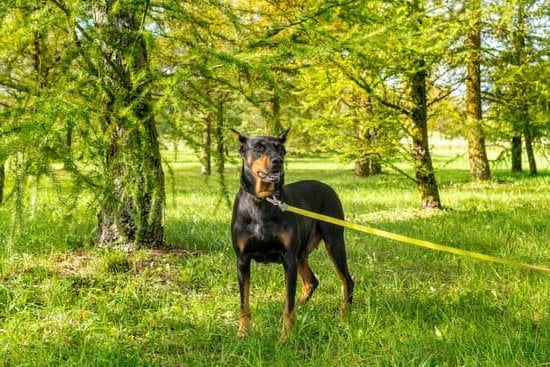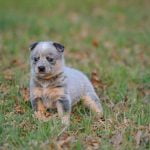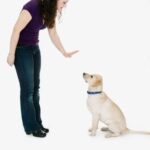Can you train a dog not to attack other dogs? The answer is yes. Responsible dog ownership includes ensuring the safety of both humans and other animals. In this article, we will explore the importance of training dogs to prevent aggressive behavior towards other dogs. We will dispel common misconceptions about certain breeds being inherently aggressive and delve into the root causes of dog-on-dog aggression. Understanding these causes is crucial before attempting any training techniques.
The impact of dog attacks cannot be underestimated. Not only can they lead to serious injuries for both dogs involved, but they can also cause trauma and anxiety in their human counterparts. By training dogs not to attack other dogs, we reduce the risk of these incidents occurring and create a safer environment for all.
One common misconception is that some breeds are inherently aggressive. While certain breeds may have specific characteristics or tendencies, it is essential to understand that aggression is not solely determined by breed but rather by a combination of factors including fear, territoriality, past negative experiences, or lack of socialization. Therefore, addressing these underlying causes is vital in shaping a dog’s behavior when interacting with others.
In the following sections, we will discuss effective methods for training dogs to avoid attacking other dogs. We will explore the significance of consistency in training efforts and suggest seeking professional help from certified trainers or behaviorists who can provide tailored guidance.
Additionally, we will cover important topics such as socialization, positive reinforcement techniques, desensitization and counter-conditioning methods, implementing management strategies to prevent attacks, and share inspiring success stories. So let’s dive into the world of training dogs not to attack other dogs and learn how responsible ownership can help create safer communities for our furry friends.
Understanding the Root Causes of Dog-on-Dog Aggression
Dog-on-dog aggression can be a serious issue that not only poses a risk to other dogs but also to humans who may intervene in such situations. It is essential for dog owners to understand the root causes of dog-on-dog aggression in order to effectively address this behavior and prevent attacks from occurring.
There are several factors that can contribute to a dog’s aggressive behavior towards other dogs, and identifying these underlying causes is crucial before attempting any training techniques.
One common cause of dog-on-dog aggression is fear. Some dogs may become fearful or anxious when approached by other dogs, leading them to exhibit aggressive behaviors as a way of self-defense. Other factors such as territoriality, past negative experiences with other dogs, or lack of socialization can also contribute to this type of aggression.
Territorial dogs may perceive their home or living space as their own territory and become aggressive towards unfamiliar dogs that invade their perceived space. Dogs that have had negative experiences with other dogs in the past may develop a generalized fear or mistrust towards all dogs, leading to aggressive reactions. Additionally, if a dog has not been properly socialized during their critical developmental period, they may struggle with interacting peacefully with other dogs.
To effectively train a dog not to attack other dogs, it is important for owners to be consistent in their efforts while seeking professional guidance from certified dog trainers or behaviorists. Consistency is key in modifying a dog’s behavior because without it, mixed messages can confuse the animal and hinder progress. Professional help ensures appropriate guidance tailored specifically to the individual dog’s needs and provides expert training methods that are effective and safe.
Overall, understanding the root causes of dog-on-dog aggression is essential for addressing and preventing this behavior. By identifying whether fear, territoriality, negative experiences, or lack of socialization are contributing factors, owners can develop targeted training plans and seek professional guidance to modify their dog’s behavior effectively. Through consistent training efforts and the use of positive reinforcement techniques, it is possible to train a dog not to attack other dogs and create safer communities for everyone involved.
Consistency and Professional Guidance
When it comes to training dogs to avoid attacking other dogs, consistency is crucial. Dogs thrive on routine and structure, so it’s important to establish clear expectations and reinforce them consistently. This means everyone in the household should be on the same page and follow the same training techniques.
Seeking professional guidance from a certified dog trainer or behaviorist is also highly recommended. These professionals have the knowledge, experience, and skills necessary to identify the underlying causes of dog-on-dog aggression and develop a tailored training plan that addresses those specific issues.
Consistency in training efforts involves not only using the same techniques but also being consistent with rewards and punishments. Positive reinforcement has proven to be effective in modifying aggressive behavior, so it’s important to reward desired behavior consistently. This can be done through treats, praise, or play. On the other hand, punishing aggressive behavior should be avoided as it may exacerbate aggression or cause fear and anxiety in your dog.
A professional dog trainer or behaviorist can provide guidance on which positive reinforcement techniques are most appropriate for your dog’s specific needs. They will help you focus on reinforcing good behaviors rather than solely correcting bad ones. They can also assist in teaching you proper timing when administering rewards or punishments.
In addition to consistency, professional guidance ensures that you are using effective and safe training methods. Each dog is unique, and what works for one may not work for another. A professional will assess your dog’s individual characteristics, history, and triggers to create a customized plan that maximizes their chances of success.
Remember that training a dog not to attack other dogs is a process that requires time, patience, and dedication from both the owner and the dog. By implementing consistent training techniques with professional guidance, you can give your furry friend the best chance at overcoming their aggressive tendencies towards other dogs and creating a safer community for everyone.
Socialization
Socialization plays a crucial role in preventing dog-on-dog aggression and is indeed the foundation of a well-behaved dog. Early socialization is essential for puppies to learn proper social skills and develop positive associations with other dogs. By introducing puppies to various environments, people, and dogs at a young age, they become more comfortable and less likely to exhibit aggressive behaviors towards other dogs later in life.
The key goal of socialization is to expose the puppy to different situations and stimuli in a controlled manner, ensuring that each experience is positive and rewarding. It’s important to start slow and gradually increase the level of exposure over time. Puppy socialization classes or playgroups can be great opportunities for puppies to interact with other well-behaved dogs, under the guidance of an experienced trainer.
To introduce puppies to other dogs safely, one should carefully choose appropriate playmates who are calm, well-socialized, and non-aggressive. Supervision is crucial during these interactions to ensure that it remains positive and that any signs of fear or discomfort can be addressed promptly.
In addition to supervised socialization experiences, it’s equally important for owners to continue exposing their dogs to new environments throughout their lives. Taking dogs on walks in different neighborhoods, visiting parks or dog-friendly events, or even arranging playdates with known friendly dogs can all contribute to their ongoing social development.
| Benefits of Socialization: | Tips for Effective Socialization: |
|---|---|
| – Builds confidence | – Start early |
| – Reduces fear/anxiety | – Gradually expose your puppy/dog |
| – Enhances communication skills | – Choose appropriate playmates |
| – Prevents dog-on-dog aggression | – Supervise all interactions |
| – Promotes positive associations | – Encourage positive experiences and rewards |
Positive Reinforcement
Positive reinforcement is a highly effective and humane training technique when it comes to modifying aggressive behavior in dogs. This approach focuses on rewarding desired behavior rather than punishing undesired behavior, creating a positive association and motivation for the dog to behave appropriately. By utilizing rewards such as treats, praise, and play, owners can incentivize their dogs to exhibit calm and non-aggressive behavior towards other dogs.
One of the key principles of positive reinforcement training is timing. It is crucial to provide the reward immediately after the desired behavior occurs so that the dog can make the connection between the action and the reward. For example, if your dog remains calm when encountering another dog without showing signs of aggression, you can offer a treat or enthusiastic praise right away. Through consistent repetition, your dog will start associating encounters with other dogs with positive experiences.
It’s essential to choose rewards that are highly motivating for your individual dog. While treats are often effective incentives, some dogs may respond better to verbal praise or engaging in their favorite game or toy. Understanding what motivates your dog will help you tailor your training approach and ensure that they feel rewarded for their good behavior.
In addition to rewards, it’s important to be patient and consistent during the training process. Dogs may not learn new behaviors overnight, especially if they have ingrained aggressive tendencies. It’s crucial to remain committed and continue reinforcing positive behaviors consistently over time. With patience, persistence, and positive reinforcement techniques, you can train your dog not to attack other dogs and foster a more harmonious relationship between them.
Remember that every dog is unique, so consulting a certified dog trainer or behaviorist who specializes in positive reinforcement techniques is highly recommended. They can assess your specific situation and provide personalized guidance based on your dog’s needs.
In professional hands, reward-based training techniques can bring about significant changes in your dog’s behavior while strengthening the bond between you both. With dedication and the right approach, you can empower your dog to become a well-behaved and friendly member of the canine community.
Desensitization and Counter-Conditioning
Desensitization and counter-conditioning are two highly effective techniques that can be used to modify a dog’s response to other dogs, ultimately replacing aggression with calmness. These techniques involve gradually exposing the dog to controlled situations where they may encounter other dogs, and associating these situations with positive experiences. Through consistent training and dedication, desensitization and counter-conditioning can significantly improve a dog’s behavior and reduce the risk of dog attacks.
The process of desensitization involves exposing the dog to stimuli that trigger their aggressive behavior in a controlled manner. This exposure is done incrementally, starting with a low-intensity stimulus that barely elicits any aggressive response from the dog.
Over time, the intensity of the stimulus is gradually increased as the dog becomes more comfortable and relaxed. For example, if a dog reacts aggressively when seeing another dog from a distance, desensitization would involve slowly decreasing this distance until they can remain calm in close proximity to other dogs.
Counter-conditioning complements desensitization by associating positive experiences with the presence of other dogs. This technique focuses on changing the emotional response of the dog towards other dogs from fear or aggression to relaxation or positivity. Positive reinforcement is key in counter-conditioning, as it involves rewarding the dog whenever they exhibit calm or friendly behavior in the presence of other dogs. Rewards can include treats, praise, or playtime with their favorite toys.
Implementing desensitization and counter-conditioning requires careful planning and patience. It is important to set realistic goals and work at a pace that suits both the individual dog’s needs and comfort level. Seeking guidance from a certified professional trainer or behaviorist is highly recommended, as they can provide expert advice tailored to your specific situation.
When using desensitization and counter-conditioning techniques, it is crucial to prioritize safety for both your own dog and others. Always ensure that any interactions between your dog and other dogs are supervised and controlled. Using a muzzle or keeping your dog on a leash during training sessions can provide an added layer of security. Responsible management strategies and appropriate precautions should be in place to prevent any potential dog attacks while undergoing training.
Overall, desensitization and counter-conditioning are powerful tools for modifying a dog’s aggressive response towards other dogs. With patience, consistency, and professional guidance, these techniques can help create a calmer and more well-behaved dog, ultimately reducing the risk of dog attacks and fostering safer communities.
| Techniques | Benefits |
|---|---|
| Desensitization | – Gradual exposure to triggering stimuli
|
| Counter-conditioning | – Changes emotional response from fear or aggression to relaxation or positivity
|
Implementing Management Strategies to Prevent Dog Attacks
Using Muzzles: Ensuring Safety and Control
One effective management strategy to prevent dog attacks is the use of muzzles. Muzzles can provide an added layer of safety and control during interactions with other dogs. It is important to choose a muzzle that allows the dog to pant, drink water, and breathe comfortably, while still preventing biting or attacking.
Keeping Dogs on Leash: Maintaining Boundaries
Another crucial management strategy is keeping dogs on leash when in public spaces. This not only helps maintain control over the dog’s movements but also allows owners to create a safe distance between their dog and others until they are confident in their dog’s ability to behave appropriately. It is important for owners to obey leash laws and keep their dogs leashed at all times, except in designated off-leash areas.
Creatiing Safe Separation: Avoiding Unwanted Encounters
Creating a safe separation between dogs during encounters can be an effective way to prevent potential conflicts or attacks. This can be done by utilizing physical barriers such as baby gates or crates at home or choosing quieter walking routes where there are fewer chances of encountering unfamiliar dogs. By avoiding situations that may trigger aggression, responsible dog owners can help ensure the safety of both their own dog as well as others.
By implementing these management strategies, responsible dog owners can significantly decrease the risk of dog attacks and create safer environments for everyone involved. It is crucial to remember that while these strategies are effective in preventing attacks, they should be used in conjunction with training techniques aimed at modifying a dog’s behavior towards other dogs.
Overall, responsible ownership involves understanding your dog’s needs, seeking professional guidance when necessary, providing adequate training and socialization, and implementing management strategies to prevent unwanted incidents. By taking these steps, we can work towards creating communities where dogs coexist peacefully and safely with each other.
Case Studies
Dog-on-dog aggression can be a concerning and challenging behavior problem for many dog owners. However, with proper training, dedication, and professional guidance, dogs can overcome their aggressive tendencies towards other dogs. In this section, we will present real-life case studies of dogs that have successfully been trained not to attack other dogs. These success stories aim to inspire and motivate dog owners who may be facing similar challenges with their own pets.
Case Study 1: Max’s Transformation
Max, a three-year-old Labrador Retriever, had a history of aggressive behavior towards other dogs. His owner sought the help of a certified dog trainer who specialized in behavior modification. The trainer conducted an assessment and determined that fear and lack of socialization were contributing factors to Max’s aggression.
Through a combination of positive reinforcement training techniques and gradual exposure to other calm and well-behaved dogs under controlled environments, Max began to show significant progress. The trainer used treats, praise, and play as rewards for calm behavior around other dogs.
Over time, Max’s fear and aggression subsided as he associated encounters with other dogs with positive experiences. Today, Max has become more confident and sociable around his canine counterparts, exemplifying the transformative power of dedicated training.
Case Study 2: Luna’s Journey
Luna, a five-year-old Australian Shepherd mix, exhibited territorial aggression towards unfamiliar dogs entering her home or yard. Her owners consulted with a professional behaviorist who specialized in desensitization techniques.
The behaviorist created a gradual desensitization plan for Luna by introducing controlled scenarios where new dogs would enter her space while providing positive reinforcement for calm behavior. This involved initially keeping Luna on leash during introductions and slowly progressing to off-leash encounters.
With consistent training sessions and patience from her owners, Luna’s territorial aggression diminished, and she learned to respond more calmly to unfamiliar dogs entering her domain. Today, Luna is able to coexist peacefully with other dogs in her home, showcasing the effectiveness of desensitization and counter-conditioning techniques.
These case studies highlight the importance of seeking professional guidance and utilizing positive reinforcement methods when training dogs not to attack other dogs. Each dog’s journey towards overcoming aggression is unique, and progress may vary depending on individual factors and circumstances. However, these success stories serve as a testament to the potential for change and transformation through proper training techniques, dedication, and a commitment to creating safer communities for both humans and canines alike.
Conclusion
In conclusion, it is crucial for responsible dog owners to understand the importance of training dogs to avoid attacking other dogs. Dog attacks not only pose a threat to the safety and well-being of humans and other dogs but can also perpetuate negative stereotypes about certain breeds being inherently aggressive.
By addressing the root causes of dog-on-dog aggression, such as fear, territoriality, past negative experiences, or lack of socialization, dog owners can take steps towards modifying their dog’s behavior effectively.
Consistency and professional guidance are key elements in training dogs to avoid attacks. Consistent training efforts help reinforce new behaviors and communication between the owner and the dog. Seeking professional help from a certified dog trainer or behaviorist ensures proper guidance and tailored training methods that address the specific needs of both the dog and its owner.
Early socialization plays a critical role in preventing dog-on-dog aggression. Introducing puppies to other dogs, gradually exposing them to different environments, and encouraging positive interactions helps build a strong foundation for good behavior. Positive reinforcement techniques, such as rewarding desired behavior with treats, praise, and playtime, have proven effective in modifying aggressive behavior.
Desensitization and counter-conditioning techniques can be used to replace aggression with calmness. Gradually exposing the dog to controlled situations and associating them with positive experiences helps reshape their response towards other dogs. Implementing management strategies like using muzzles or keeping dogs on leash during encounters provide added safety measures during the training process.
Real-life success stories demonstrate that through proper training and dedication, dogs can overcome their aggressive tendencies towards other dogs. By taking responsibility for their pet’s behavior and seeking professional help when needed, responsible dog owners can create safer communities where all dogs can coexist harmoniously.
Frequently Asked Questions
How do I stop my dog from attacking other dogs?
To stop your dog from attacking other dogs, it is important to first identify the root cause behind their aggressive behavior. It could stem from fear, lack of socialization, territorial instincts, or past traumatic experiences. Seeking the help of a professional dog trainer or behaviorist can be beneficial in understanding the specific triggers and developing a tailored plan for training and behavior modification.
Gradual desensitization and counterconditioning techniques may be employed to teach your dog alternative responses when encountering other dogs. Consistency, patience, positive reinforcement, and providing a safe and controlled environment are crucial in addressing and managing aggression in dogs.
Can a dog be trained not to be aggressive to other dogs?
Yes, a dog can be trained not to be aggressive towards other dogs through proper training techniques and behavioral management strategies. Dogs have the capacity to learn and adapt their behaviors if provided with consistent reinforcement and guidance. The key lies in identifying the underlying causes for their aggression and addressing them systematically.
Professional assistance may be useful in designing an appropriate training plan that incorporates positive reinforcement methods such as rewards for desirable behaviors like calmness or appropriate social interactions with other dogs. Training sessions should focus on gradually exposing the dog to controlled interactions with other dogs while simultaneously reinforcing non-aggressive responses.
Why does my dog keep attacking other dogs?
There can be various reasons why your dog keeps attacking other dogs. It could result from fear or anxiety when confronted with unfamiliar animals or situations, protectiveness over resources or territory, lack of proper socialization during critical periods of development, previous negative experiences with other dogs leading to defensive aggression, frustration due to restrained energy levels or inability to communicate effectively using body language cues.
Understanding the underlying motivations behind your dog’s aggressive behavior is essential for effective intervention. Consulting a professional animal behaviorist or veterinarian can help identify the specific triggers contributing to this behavior pattern and develop a customized approach involving training methods, environmental adjustments, behavior modification techniques, and potentially even medications if necessary.

Welcome to the blog! I am a professional dog trainer and have been working with dogs for many years. In this blog, I will be discussing various topics related to dog training, including tips, tricks, and advice. I hope you find this information helpful and informative. Thanks for reading!





